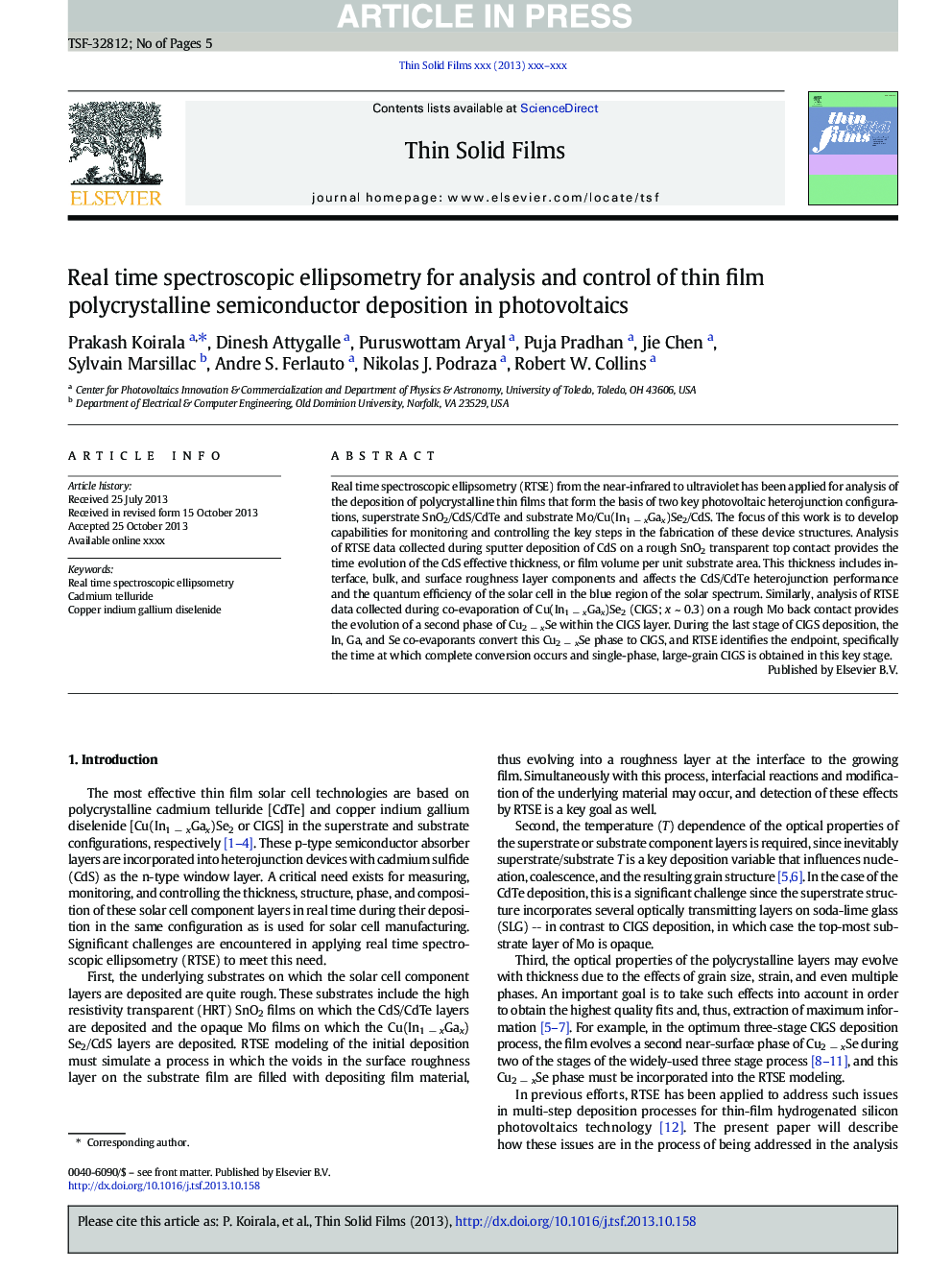| Article ID | Journal | Published Year | Pages | File Type |
|---|---|---|---|---|
| 10669662 | Thin Solid Films | 2014 | 5 Pages |
Abstract
Real time spectroscopic ellipsometry (RTSE) from the near-infrared to ultraviolet has been applied for analysis of the deposition of polycrystalline thin films that form the basis of two key photovoltaic heterojunction configurations, superstrate SnO2/CdS/CdTe and substrate Mo/Cu(In1 â xGax)Se2/CdS. The focus of this work is to develop capabilities for monitoring and controlling the key steps in the fabrication of these device structures. Analysis of RTSE data collected during sputter deposition of CdS on a rough SnO2 transparent top contact provides the time evolution of the CdS effective thickness, or film volume per unit substrate area. This thickness includes interface, bulk, and surface roughness layer components and affects the CdS/CdTe heterojunction performance and the quantum efficiency of the solar cell in the blue region of the solar spectrum. Similarly, analysis of RTSE data collected during co-evaporation of Cu(In1 â xGax)Se2 (CIGS; x ~ 0.3) on a rough Mo back contact provides the evolution of a second phase of Cu2 â xSe within the CIGS layer. During the last stage of CIGS deposition, the In, Ga, and Se co-evaporants convert this Cu2 â xSe phase to CIGS, and RTSE identifies the endpoint, specifically the time at which complete conversion occurs and single-phase, large-grain CIGS is obtained in this key stage.
Related Topics
Physical Sciences and Engineering
Materials Science
Nanotechnology
Authors
Prakash Koirala, Dinesh Attygalle, Puruswottam Aryal, Puja Pradhan, Jie Chen, Sylvain Marsillac, Andre S. Ferlauto, Nikolas J. Podraza, Robert W. Collins,
